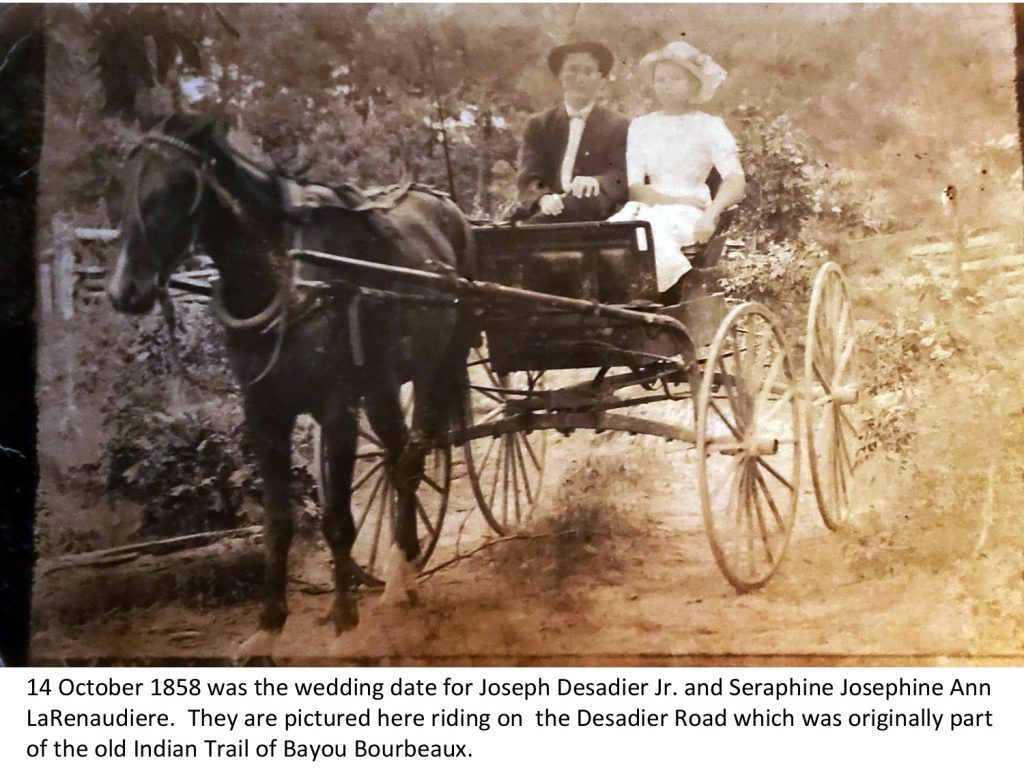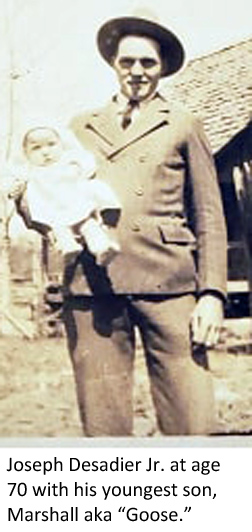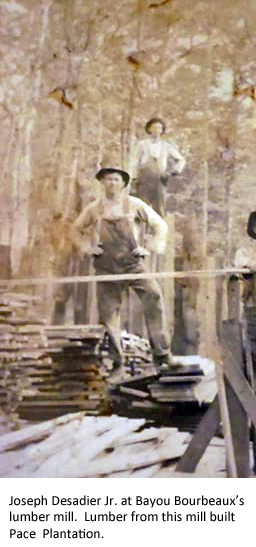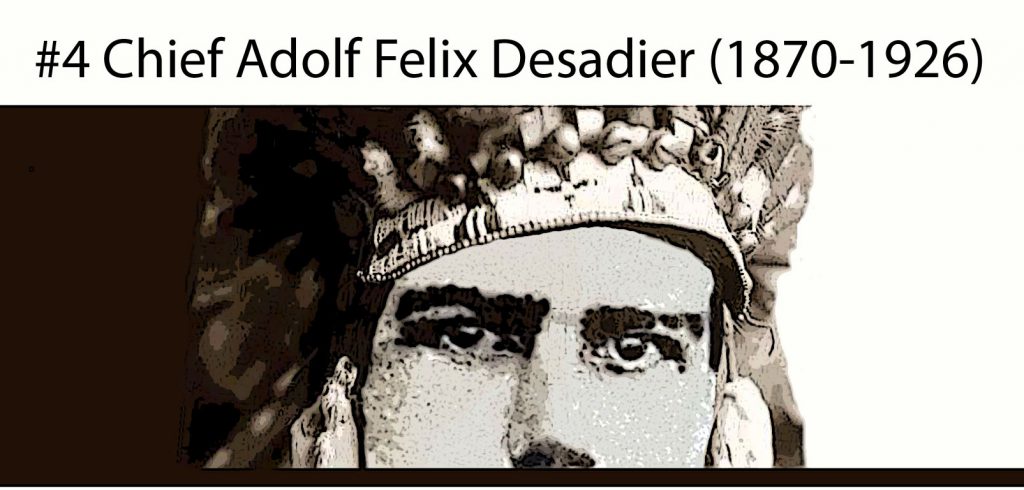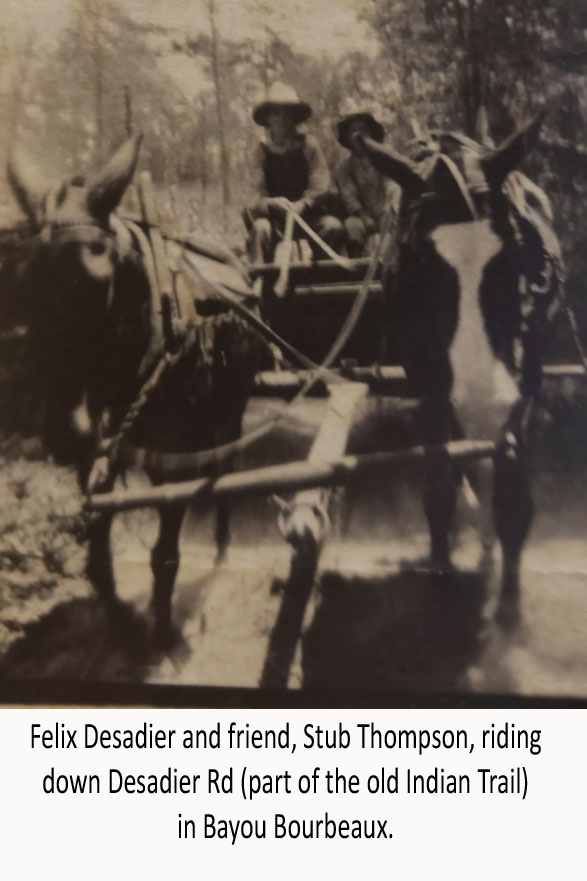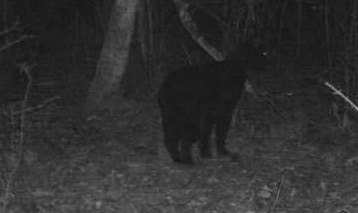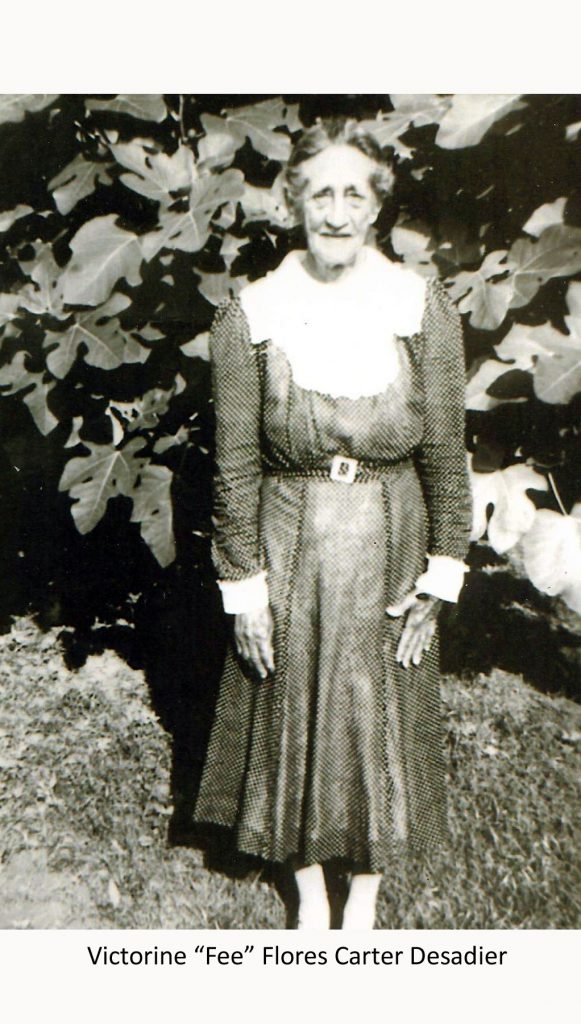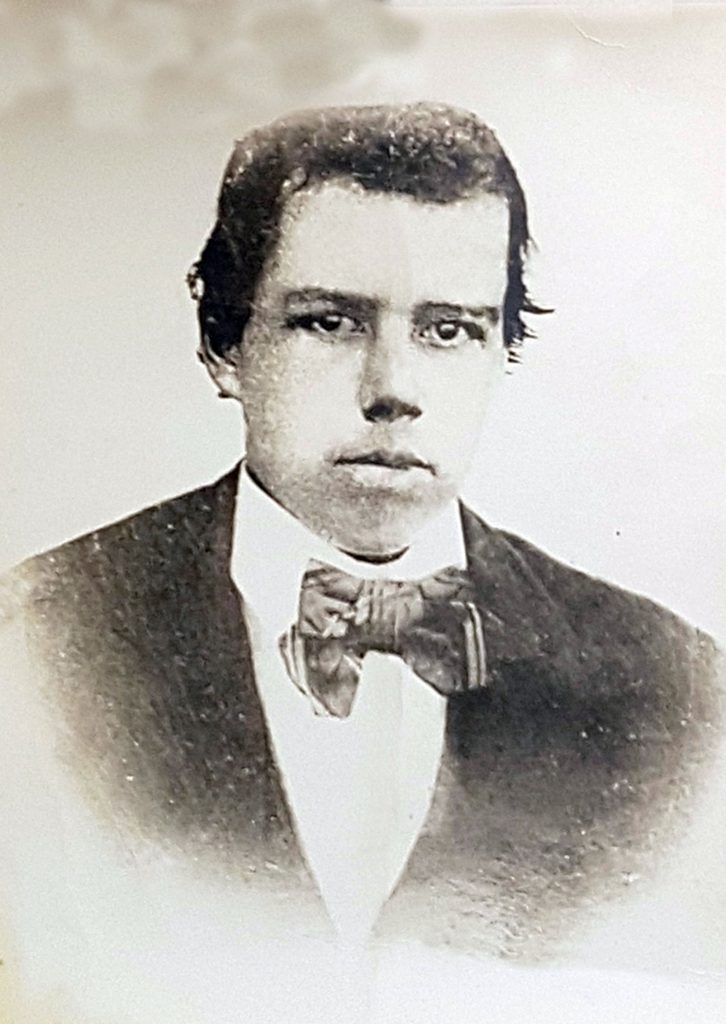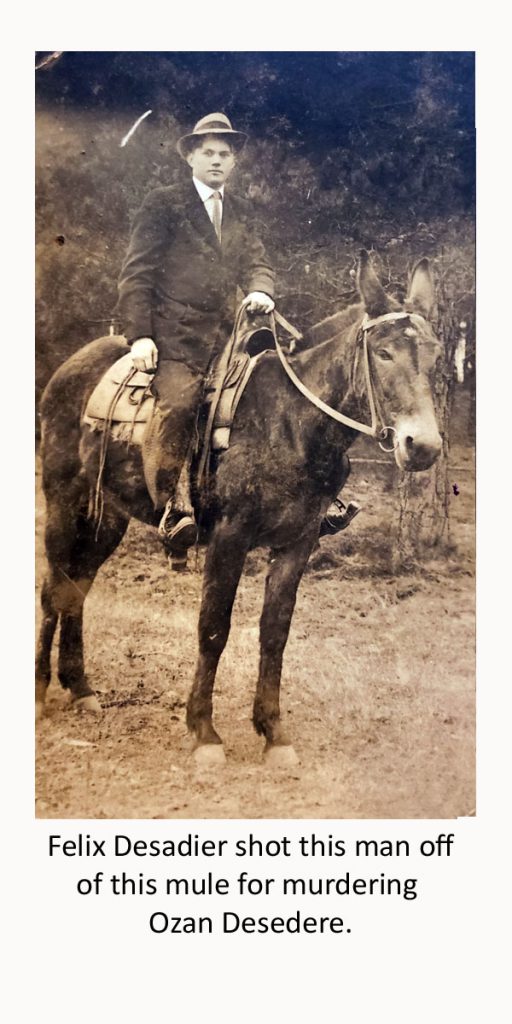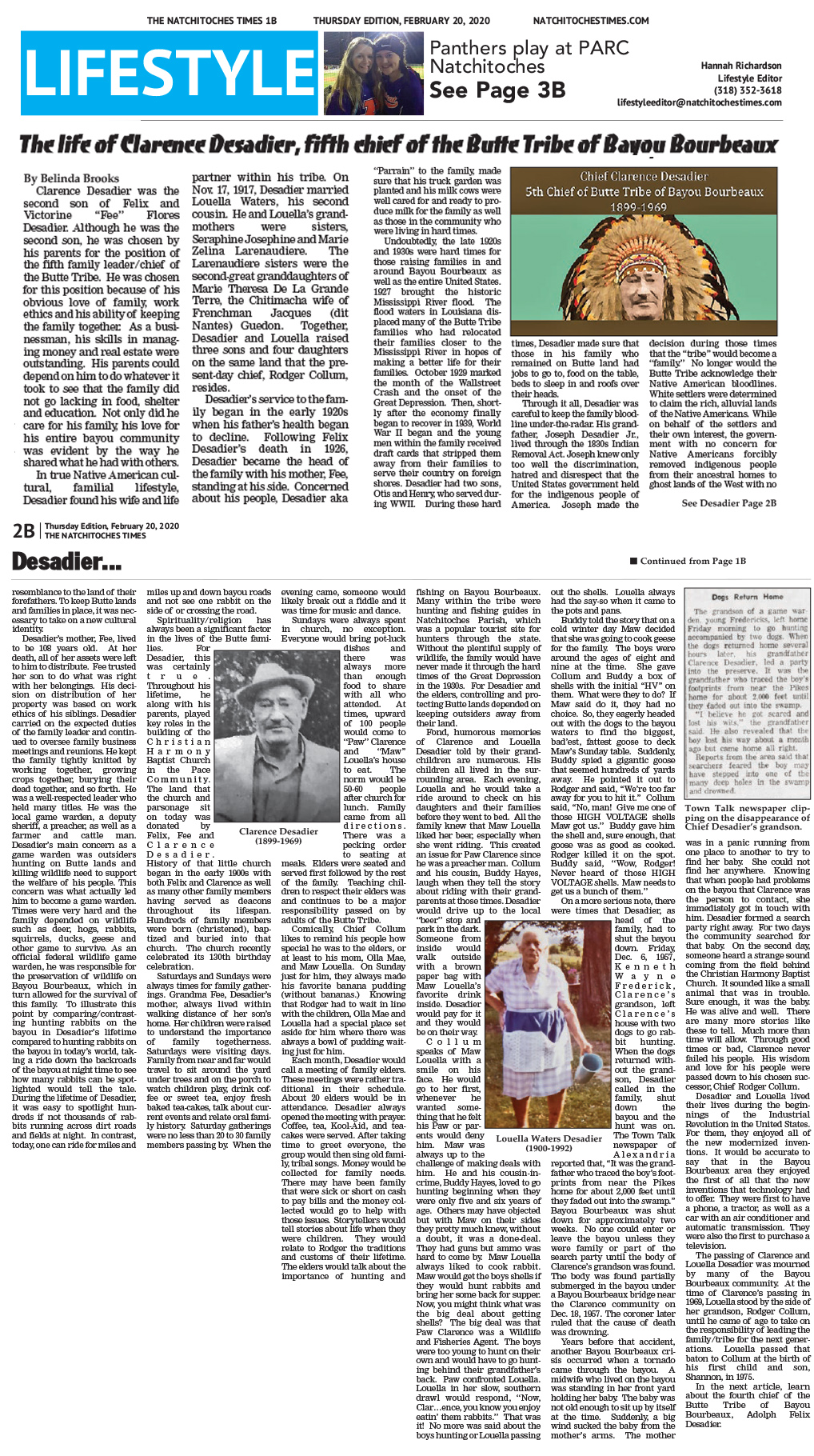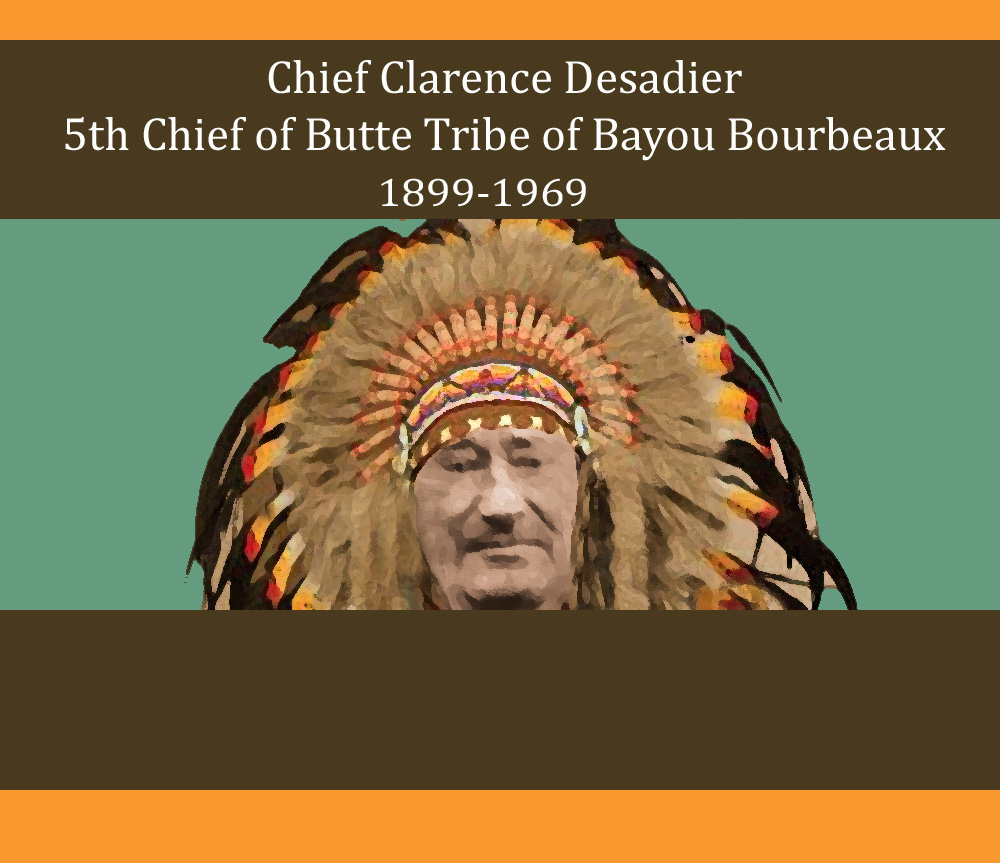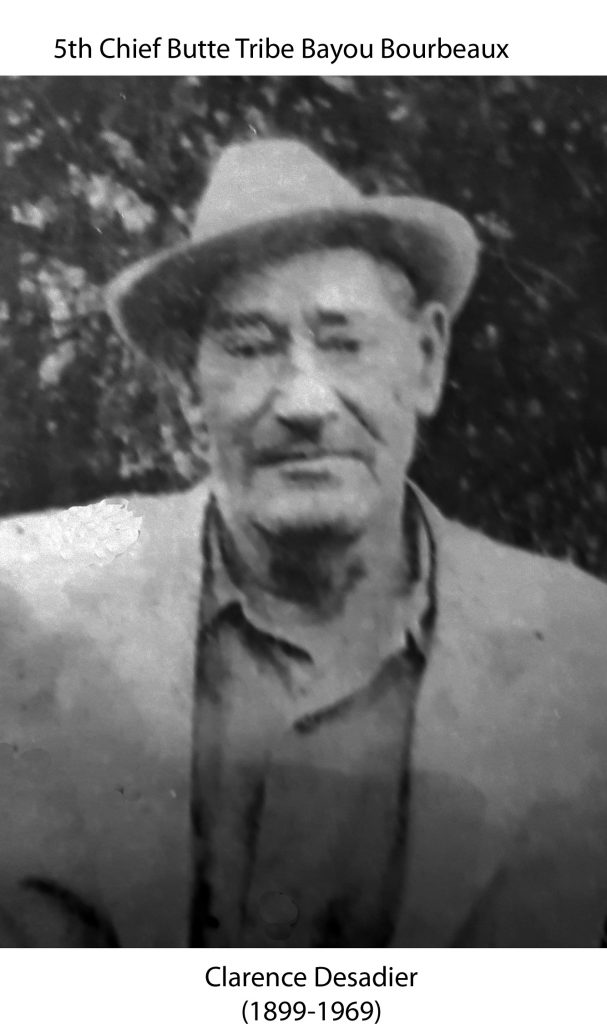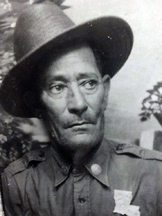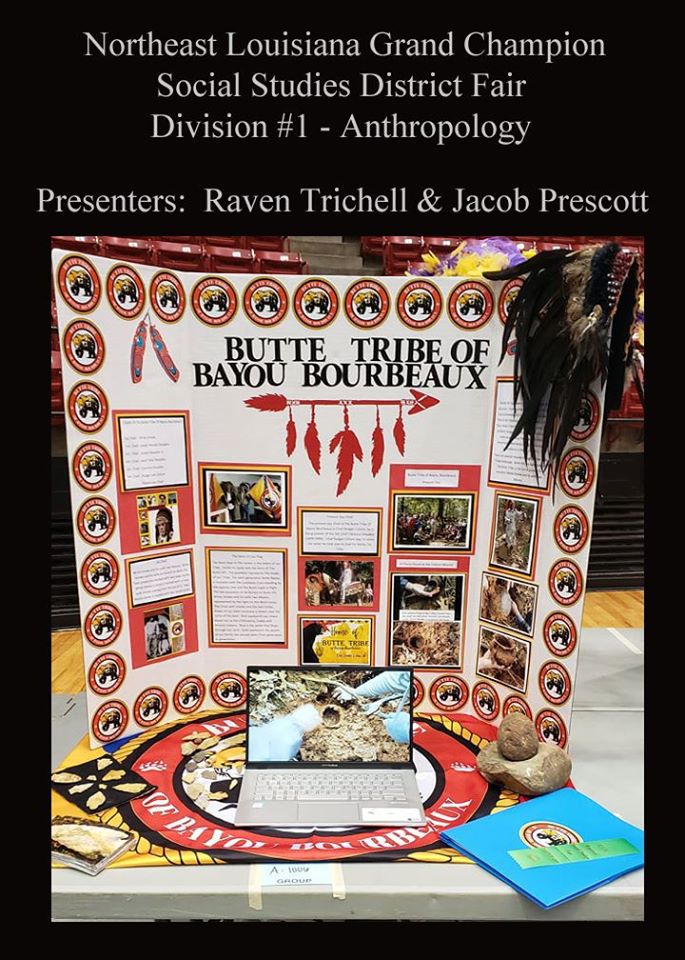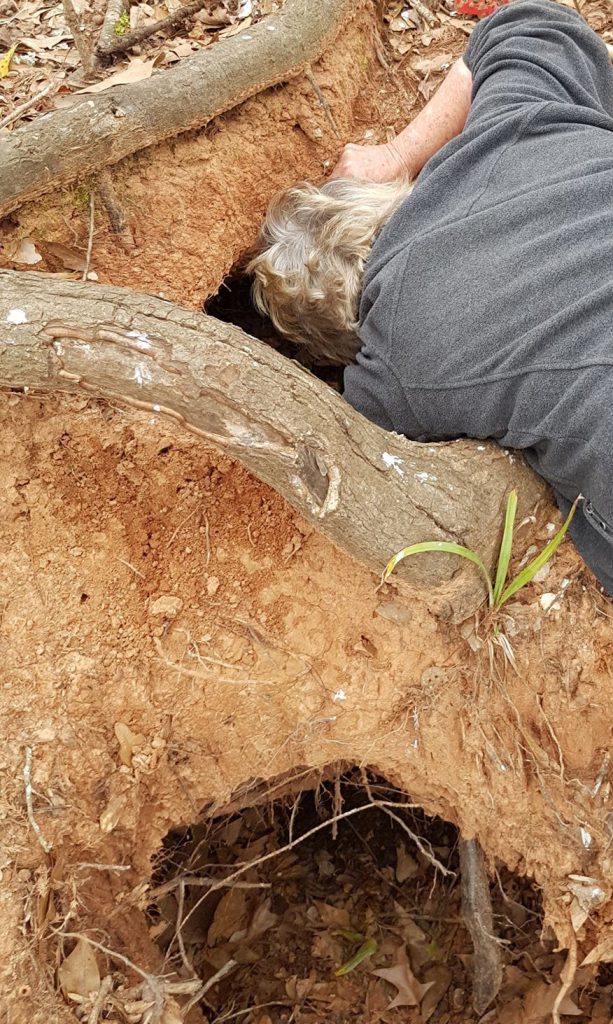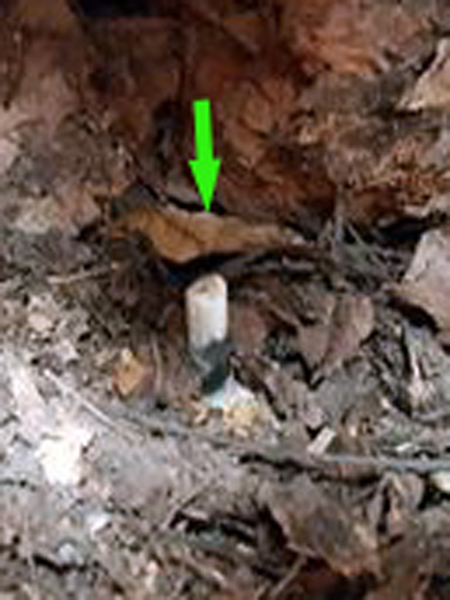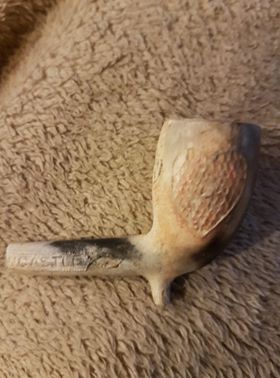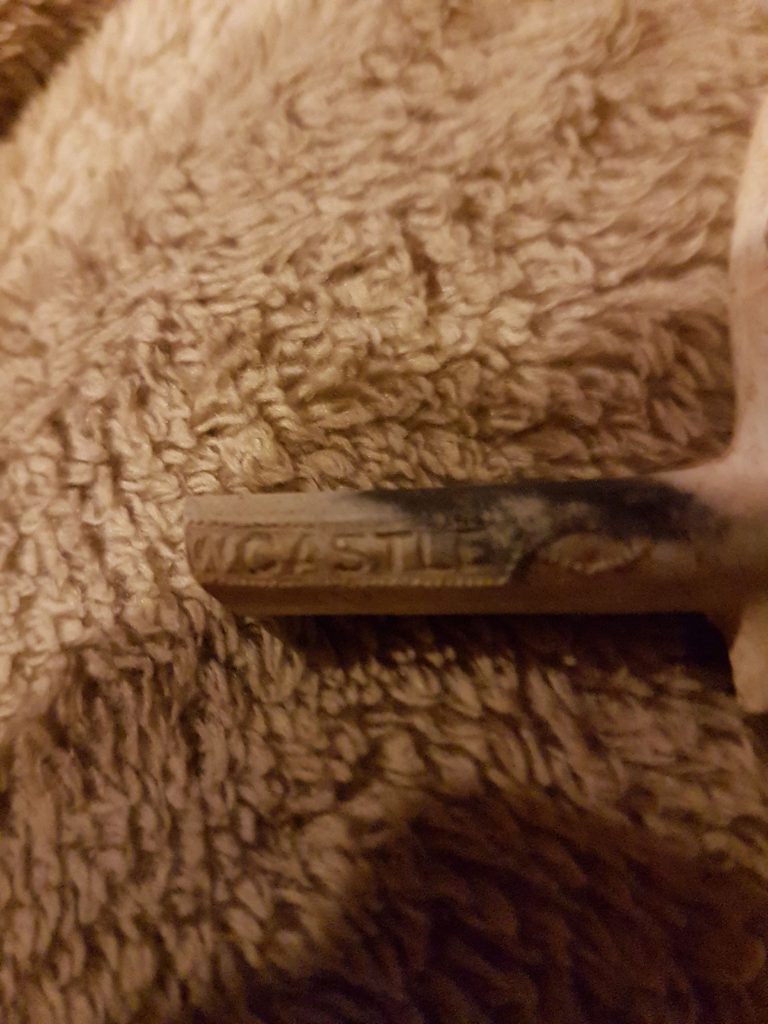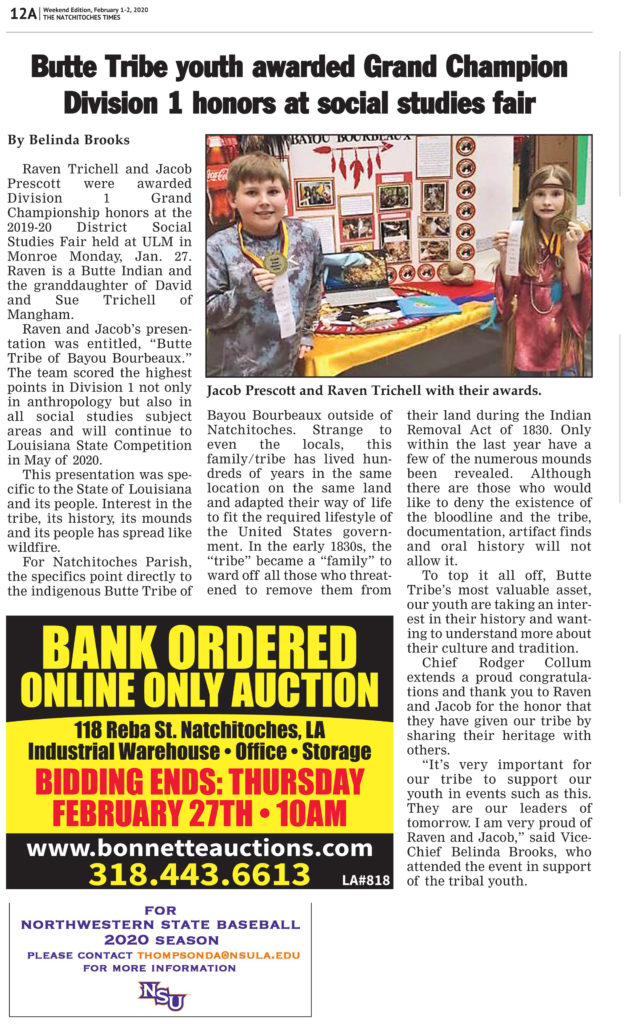Written by: Belinda Brooks
Oral History by: Chief Rodger Lee Collum
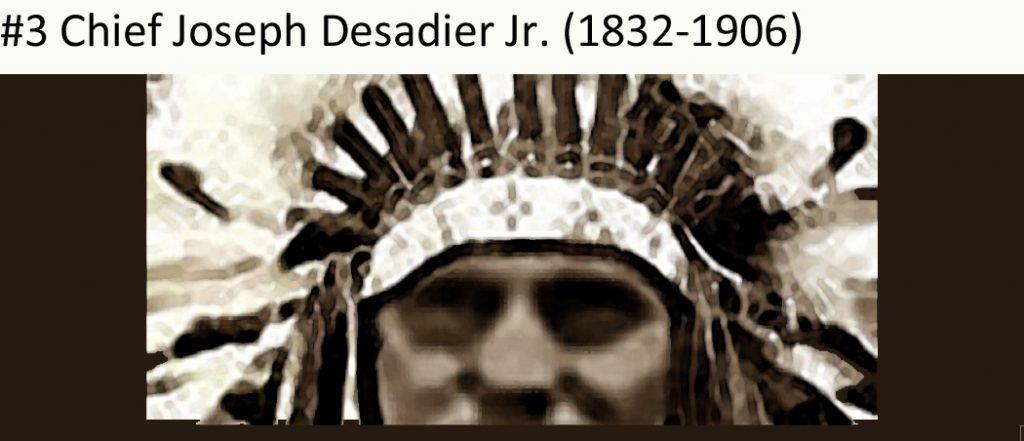
Chief Joseph Desadier Jr., 3rd Chief of the Butte Tribe of Bayou Bourbeaux was born January 16, 1832, in Bayou Bourbeaux in Natchitoches Parish. His parents were Joseph Desadier Sr. and Ana Louise Perez both Texas Indians born at the San Fernando Missions and raised in Louisiana at Bayou Bourbeaux.
Of all the Butte chiefs, Joseph Jr.’s, life span covered the historical beginnings of Louisiana and Texas within the United States. Less than a year and a half before his birth, President Andrew Jackson signed the Indian Removal Act which was in the process of being enforced on Joseph’s birthdate. This process was the force that led the pathway for future decisions made by his father in the struggle for the survival for his people. The decision was an easy one for the survival of the tribe. The tribe would adopt the ways of the white man. They would live as a family not a tribe.
STORIES OF INDIAN REMOVAL, WAR, RECONSTRUCTION AT BAYOU BOURBEAUX
As a child, Joseph would sit through meetings with the elders and here of atrocities dealt to their indigenous brothers and sisters to the East as they were forced to leave their homeland and belongings with the clothes on their backs in the dead of winter for a desolate land in the West. Thousands were dying. Some were escaping the forced journey to hide in the swamp lands of Bayou Bourbeaux.
By the age of 14, the United States had waged war on Mexico and annexed Texas Territory as a state. Mexico signed an agreement on the Rio Grande and Texas borderline. This was all good news for the Butte Tribe considering their trade in horses and cattle across the Texas line.
One day, out of nowhere, federal troops rode into Bayou Bourbeaux. They rounded up a large part of the community in one location. At that point, eight children were taken from the group. The people were told that the children were going to be placed in a school far away and when their schooling was over that they would be returned. The action caused instant rebellious activity within the community. Joseph Jr., as the family leader, was furious! He was taken in chains to the military jail where he remained for four months. The children were never returned.
At the age of 30 approximately one year after the beginning of the Civil War, President Lincoln signed the 1862 Homestead Act. After the war, abolitionists were out for everything that they could steal from all people of color, even Native Americans. Even before that time, Europeans had started moving into the bayou and marking off land as their own. Confusion was around every corner where the land was the topic. What belonged to the family had to be protected. The family had to band together to keep as much of their land as possible. The family had their ways. What was meant by that was that the only way into the Bayou Bourbeaux community was by the family’s consent. Should a person not be wanted nor welcomed in the area, the bayou would be shutdown. What was understood and realized by Joseph Jr. was that there was no one to fight or care for the indigenous people of America. The family would have to see to itself.
MARRIAGES OF JOSEPH DESADIER JR.
Joseph Jr.’s first wife was Maria Casimira Carmona whose parents and grandparents where from the Nacogdoches and Los Adaes Post in Texas. Maria Casimira was a Texas Indian by bloodline. Carmona died with no issue.
Marriage number two is the marriage that created the Butte bloodline of the family. Seraphine Josephine Ann LaRenaudiere was born June 5, 1837, to Charles Phillippe Larenaudiere and Marie Desneiges Denis. According to Chief Rodger Collum, she was the most beautiful of all of the chief’s wives. Known as Josephine, her bloodline was linked to both Texas and Chitimacha Indians of Louisiana. She was the 2nd great-granddaughter of Marie Theresa De La Grande Terre. Marie Theresa is a documented Chitimacha captive of St. Denis after his French forces raided the Chitimacha village in Mobile in retaliation of the murder of a mission French priest. Marie Theresa married French officer Jacques Guedon and settled in Bayou Bourbeaux area where many of their descendants remain today. Twelve children were produced from this marriage. One became the next chief of the Butte Tribe.
Following Josephine’s death, Joseph Jr. married Lorenza Sauce. Sauce did have a Laffite ancestor and it is possible that she had Native American ancestors. This marriage produced two children.
Last but not least at the age of 70, Joseph Jr.’s fourth wife was Delzina Gallien. She was several years younger than he at the time of their marriage. They had two sons. One was the son known as “Goose.” Goose was an interesting character in the tribe’s history. Born in the early 1900’s, he never married and never wore shoes. During his lifetime, Goose had the title of Keeper of the Mound. The mound referenced Butte Hill which is actually one of the largest mounds in the Natchitoches Parish area. Until recently revealed, few people knew anything about Butte Hill much less the fact that it was a mound. Each morning, Goose would get up, head out for Butte Hill, spend the day and come home in the afternoon.
FAMILY
Joseph Jr. and his wife, Josephine, were very well-to-do people. They lived in a two-story house on Bayou Bourbeaux. She owned a two-story house on Texas Street in Natchitoches with a large lot. Together they owned most of Bayou Bourbeaux. Additionally, they owned land on Red River at Grande Ecore.
Family was Joseph’s main concern. He employed most of his family. Thus, he was responsible for the livelihood of all his families. The main source of income was cotton, cattle and tobacco. Crops would be planted on the lands other than the prairie lands. Cattle were free range long-horns brought in by Butte Indians from Texas and were grazed on the prairie lands. By this time most of the buffalo had been killed out by the white men that had moved into the area.
Tribal meetings and get togethers were in private. No matter the era, the government was always against the actions of Native Americans. Survival depended on secrecy. Survival depended on denial of one’s ethnicity. Everything was judged by skin color. To be black skinned was bad enough; but, according to the United States government, a red skinned man had no chance of owning land or casting a vote. A red skinned man now was an invader in his own homeland.
One of Joseph’s greatest interest was his horses. Known for his beautiful paint walking-horses, buyers came from surrounding parishes and states just to take a look at his stock. Recently, Chief Collum was checking the bloodline of one of his mares bought years ago around Lake Charles to breed with his stud horse, Rock. When looking at her papers, whose name should he see? None other than his ancestor, Joseph Desadier Jr. Yes, Joseph Jr.’s line had come home.
SCHOOL
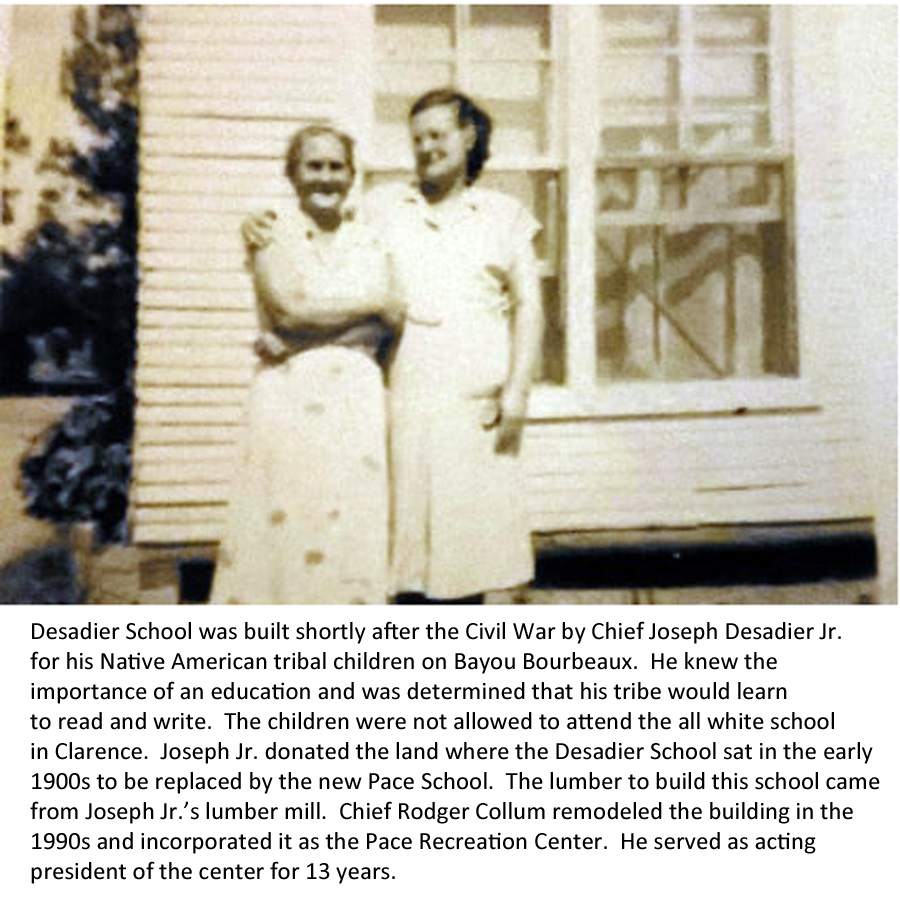
To read, write, and cipher were understood to be a basic part of life for the children of Joseph Jr. He knew the importance of knowing how to calculate and having knowledge of documents that require signatures. People of color were not allowed in the white schools of the area. Besides that fact, Joseph did not trust the children of his tribe in a white school. He would never forget the federal troops riding off with those eight children who never returned. He did not want his children away from the bayou. Therefore, he built the Desadier School in the 1870s which was the first school building in the Bayou Bourbeaux area.
BUTTE TRIBE & THE NIGHT RIDERS
The following oral history was given to Chief Rodger Collum by his great-grandmother, Victoria “Fee” Flores Desadier (1855-1961) who was 12 years old when the first killing took place, lived during these times and personally knew the people involved in all these events. She was also the wife of Chief Adolph Felix Desadier and daughter-in-law of Chief Joseph Desadier Jr of the Butte Indians. She died at the age of 108 years old. Fee witnessed the actual killing of one of the outlaws by federal troops. She is credited as being the historical visual story-teller of the West-Kimbell Clan, The Night Riders. The story as it relates to the Butte Tribe goes like this:
Following the Civil War between 1866-1870, the Night Riders aka the West-Kimbell Clan were a local outlaw group from St. Maurice, Louisiana who ruthlessly murdered over 150 settlers traveling to the Texas territory. All the surrounding communities with the exception of Bayou Bourbeaux’s Butte community had been hit with their vicious, unmerciful slaughter of innocent people.
Operations for this malicious outlaw group was structured like a well-oiled machine. It all centered around fast-moving horses. As mentioned, Joseph Jr. had the best stock of horses in the area. The Night Riders were well aware of that fact. The issue was that the horses were on Butte land and no one wanted to mess with that tribe of people.
The plan was to first approach Joseph Jr. and bid on his fastest horses with no intention of actually paying for the horses. When the offer was made and refused, a plan was put into place to raid the herd of horses at night and take what they wanted. What the Night Riders were not prepared for was what was waiting for them when they arrived on Butte land.
Joseph Jr. understood the pattern of the murderous West-Kimbell clan. Joseph Jr. shut-down the bayou. Groups of family members waited in ambush at every entrance to Butte land. When the Night Riders came up the narrow trails in the dead of night, the Butte braves swarmed them like a hive of bees. That was the last visit of the Night Riders to Butte lands until stories of a hidden treasurer began to spread across the bayou.
One a sunny day in 1870, Victoria Fee Flores (future wife of Chief Adolf Felix Desadier) was baby-sitting for a neighbor who was related to the West-Kimbell clan. Fee was sitting on a log outside watching the children play when she saw horses riding up to the log cabin. The group riding in were lawmen looking for the Night Riders. A lady came out from the house to speak to the lawmen. When asked where the men were, she told the lawmen that no one was at that location. One of the children was nearby, heard the question and yelled out, “Yes, he is. He’s in the field.” Then, the child pointed in the direction of the field that she was speaking about. The lawmen circled the field and killed the man on the spot.
In 1872 the little community of Atlanta, Louisiana, formed a vigilante group to get rid of the Night Riders. Meantime, trading post owner-bookkeeper and treasurer of the Night Riders evil gains, Williams, got wind of what was going on in Atlanta. He called his slave, Pad, to come quickly. Together they boxed up all the treasure and headed out to hide everything until the time was safe for his return. Williams must have given previous thought of a location for hiding the loot; because when he left the trading post, he headed up the old Indian Trail and did not stop until they got to Chivery Dam. There, they followed a trail of marked trees in his loaded wagon until they came to an old duck blind and that it where they stored their loot. Williams and Pad headed out toward New Orleans until all the confusion settled down. About a year or so later, Williams returned, recovered his treasure, moved across the Red River to Natchitoches and bought up most of the available property there.
Next: Chief Joseph Pereda Desadier – 2nd Chief of Butte Tribe of Bayou Bourbeaux
